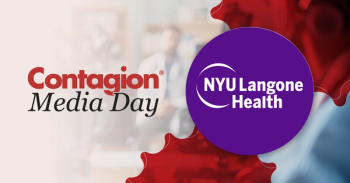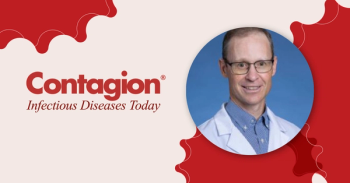
Preventing C. difficile in Post-Acute Care Facilities
Robin Jump, MD, PhD, assistant professor in the Department of Medicine at the Case Western Reserve University, outlines ways that healthcare providers can improve the prevention and management of C. difficile in post-acute care facilities.
Robin Jump, MD, PhD, assistant professor in the Department of Medicine at the Case Western Reserve University, outlines ways that healthcare providers can improve the prevention and management of C. difficile in post-acute care facilities.
Interview Transcript (slightly modified for readability)
“The way that healthcare providers can help improve the prevention and management of [Clostridium difficile] C. difficile in post-acute care facilities is a complex answer; this is a difficult disease. One of the keys here is prevention, and that relies in large part on antimicrobial stewardship, [such as] avoiding unnecessary antibiotic exposure, and also relies upon infection control.
Antimicrobial stewardship is a burden that falls upon both the providers in post-acute [care] as well as the hospitals themselves, and if we can all work together to minimize antibiotic exposure to our patients and our long-term care [patient] residents, that will help reduce their vulnerability, and that’s key.
Infection control both in the hospital and in post-acute care is important and is also very challenging. C. diff spores can last on surfaces for a period of months. We have evidence that says they can last for five months on surfaces. They’re also very hard to remove with routine cleaning agents, so the quaternary ammonium compounds that most hospitals and long-term care facilities use for disinfection aren’t effective against C. difficile spores, neither is the alcohol [sanitizer] that we all use. The spores are resistant to that as well, so, it’s hard to get off of hands, which means that the fundamental infection control maneuver that we have to do as healthcare workers is handwashing with soap and water. We have to do a good job of handwashing with soap and water because even soap isn’t good at getting C. diff spores off the skin; they like to hang on there. That becomes another challenge for all of us I think, to take the time and to find the time to do this well.
Another key aspect of this is to reduce transmission by having all healthcare workers wear gowns and gloves when they interact with people that have C. difficile infection and taking off that personal protective equipment well: so putting it on and then taking it off properly in the room.
Another aspect of good prevention is early contact precautions. If we think that someone may have C. diff, my preference, and I think that of many people, is to put them in contact precautions early until we’ve actually ruled out the disease. This usually takes about two days and reduces the possibility of transmitting spores to other patients or residents throughout the facility.
Another way that post-acute care facilities can prevent C. difficile infection through infection control is through really good cleaning. This is, daily disinfection with bleach, and the bleach and bleach wipes are very important here. Daily disinfection and cleaning of high-touch surfaces in residence rooms [is needed] as well as in other high-touch areas like in the nursing station.
One of the big challenges [of] post-acute care is trying to clean the resident’s room. In the hospital, once someone is known to have C. diff, they stay in contact precautions for the duration of their hospitalization and if that’s three days or five days or seven days, [cleaning the room] is not so hard. When they go, when they’re discharged, their room gets a terminal clean. In a long-term care facility this is so much more challenging because they live there and they’re supposed to be there for a long time, be it two weeks or two months or two years. We can’t change somebody’s room so they can do a cleaning of their room, so, trying to figure out the balance between maintaining that home-like environment, because it is their home, and also trying to maintain infection control and disinfection practices is a burden. Daily disinfection, using bleach to clean surfaces, will get you so far when people have a lot of personal possessions, it becomes more challenging; that’s where some of these more technologically innovative disinfection devices come into play.”
Newsletter
Stay ahead of emerging infectious disease threats with expert insights and breaking research. Subscribe now to get updates delivered straight to your inbox.























































































































































































































































































